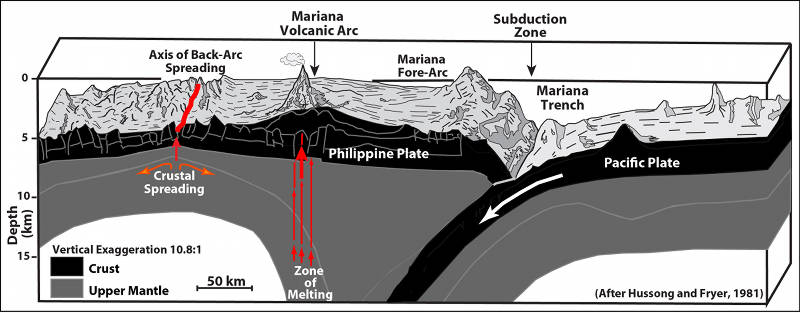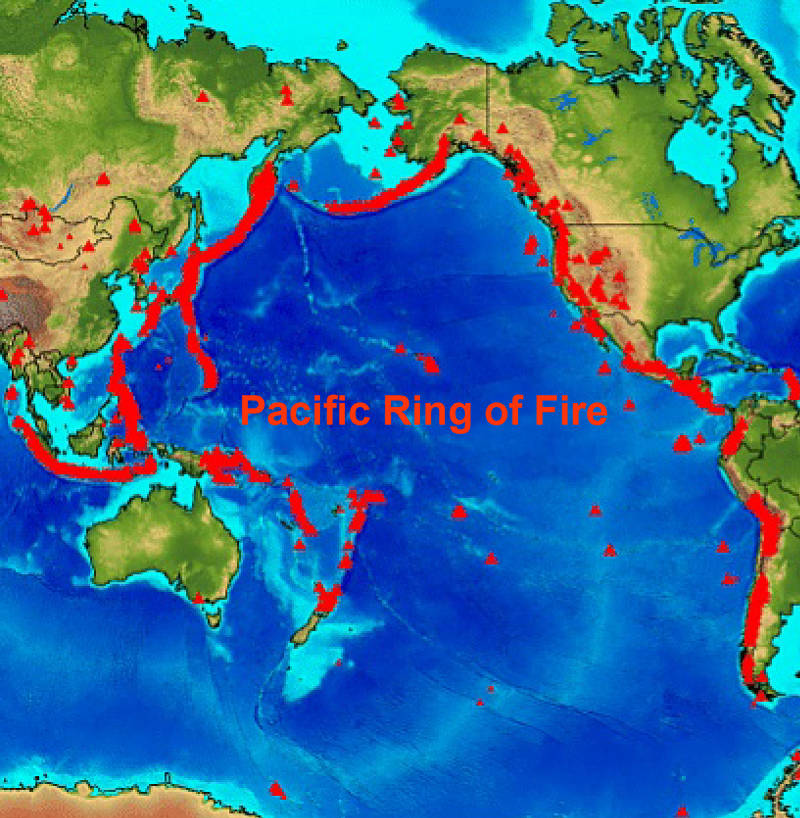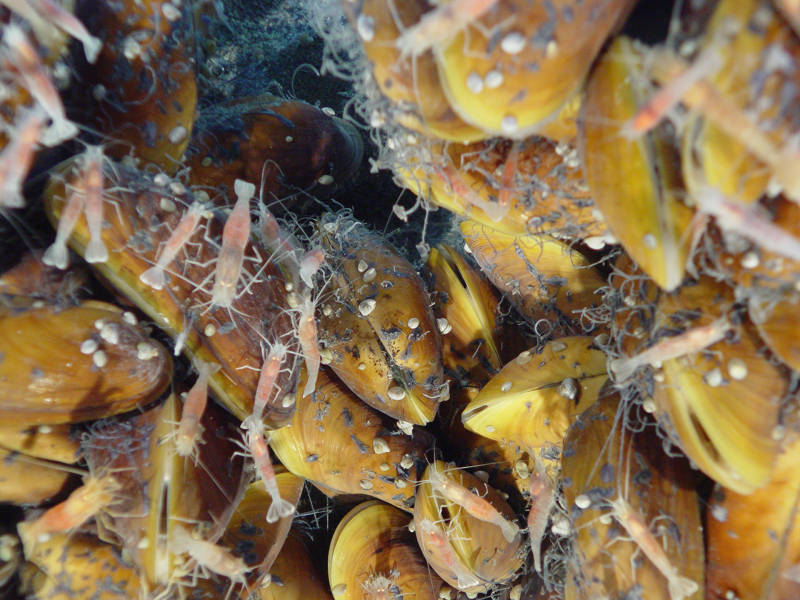
By Bill Chadwick - Oregon State University and NOAA Pacific Marine Environmental Laboratory

The Mariana volcanic arc is a chain of underwater volcanoes (seamounts). In this 3D view, the ocean floor is colored by depth — deep areas are cool colors and shallow areas are warm colors; the few islands in the scene above sea level are green. The image is three times vertically exaggerated. Image courtesy of Submarine Ring of Fire 2014 - Ironman, NOAA/PMEL, NSF. Download larger version (jpg, 2.6 MB).
Seamounts are underwater mountains, and sometimes they are also active volcanoes. The Mariana Arc is a chain of many seamounts (60) and a few islands (9), which are all active volcanoes. The islands are just the few volcanoes that have grown tall enough to reach above sea level. The seamounts in the Mariana Arc lie hidden below the ocean’s surface, and we are exploring them to find which have active hydrothermal systems and unique biological communities. Many of these seamounts are now part of the Mariana Trench Marine National Monument.
Computer-generated fly-through movie showing the chain of seamounts that make up the Mariana volcanic arc. The seafloor is colored according to depth, with cooler colors in deeper areas and warmer colors at shallower depths; islands above sea level are green. The bathymetry is three times vertically exaggerated. Video courtesy of Susan Merle, Oregon State University. Download (mp4, 10.2 MB)
The more we explore in this region, the more amazing animals and environments we discover.

Geologic cross-section showing the Pacific Plate (right) subducting beneath the Philippine Plate (left) at the Mariana Trench. This causes melting that feeds magma to the volcanoes of the Mariana arc. Figure modified from Hussong and Fryer, 1981. Download larger version (jpg, 698 KB).
The "Ring of Fire" is a circular zone of active volcanoes that surrounds the Pacific Ocean basin, mostly along plate boundaries and above subduction zones. Much is known about volcanoes on land within the Ring of Fire (for example, in the Aleutians, the Cascades, the Andes, etc.), but comparatively little is known about the submarine volcanoes, simply because they are more difficult to observe.

Map of the all the volcanoes around the Pacific (red triangles) making up the Ring of Fire. Image courtesy of Submarine Ring of Fire 2014 - Ironman, NOAA/PMEL, NSF. Download larger version (jpg, 1.5 MB).
Where submarine volcanoes bring magma near the seafloor or erupt lava at the surface, seafloor hot springs called hydrothermal vents are common. Seawater that circulates deep within a submarine volcano gets heated up before it returns to the seafloor. Hydrothermal vent fluid is rich in chemicals dissolved from the rocks they pass through, and these vents support unique ecosystems of microorganisms and animals that rely entirely on chemical energy for survival. In this way, submarine volcanoes actually support many of Earth’s most unusual ecosystems.
Our work on this expedition is focused on trying to understand how these ecosystems function and the interactions between volcanic activity, the chemistry of hydrothermal vents, and the ecology of their biological communities.

These mussels, shrimp, and limpets living at NW EIfuku seamount all depend on the chemical energy in hydrothermal vents for survival. Image courtesy of Submarine Ring of Fire 2014 - Ironman, NOAA/PMEL. Download larger version (jpg, 3.3 MB).